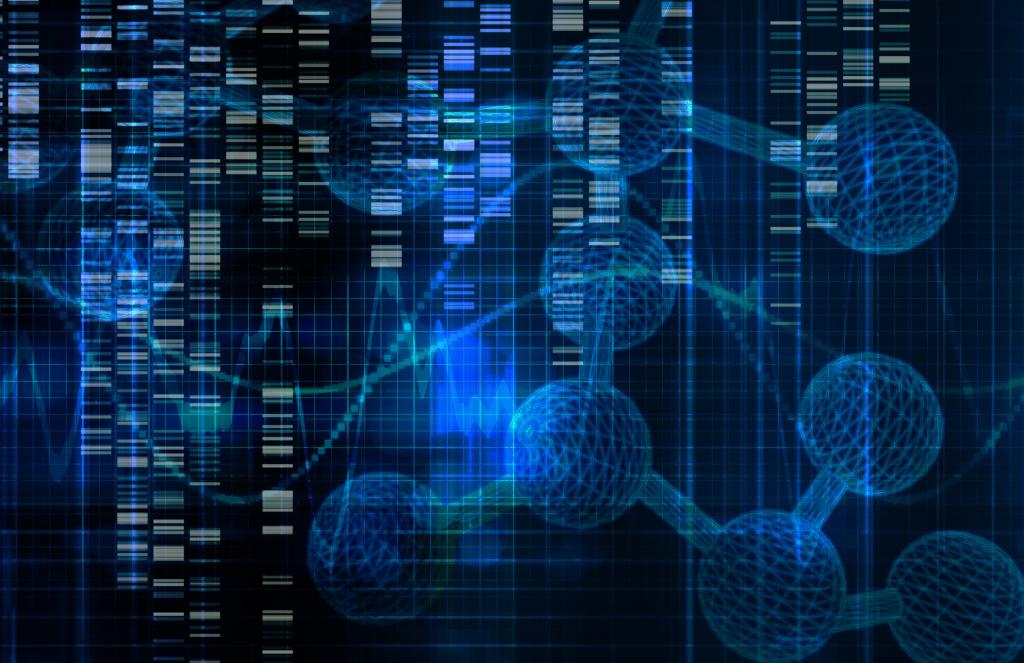Admission CTAs
Mason researchers create a bioprospecting tool to hunt for Komodo dragon peptides
George Mason University researchers have developed a new bioprospecting tool to help them find promising Komodo dragon peptides that are germ-fighting powerhouses, according to new research in the Journal of Proteome Research.
The federal government’s Defense Threat Reduction Agency (DTRA) funded the research with a $7.57 million contract for the George Mason team to analyze peptides used by such “extreme animals” as Komodo dragons and American alligators to defend against infection, potentially leading to new drugs and strategies to fight infection and protect the warfighter from bacterial bioweapons.
The rampant spread of antibiotic resistance threatens our ability to treat what were once routine infections, and there is an urgent need for new antibiotics. These evolutionarily ancient reptiles could be a new source for antibiotics—they dine on carrion and live in bacteria-rich environments but rarely fall ill.
“Nature can provide great templates and models for the development of new drugs against these hard-to-kill bacteria,” said Monique van Hoek, a professor with Mason’s National Center for Biodefense and Infectious Diseases, who along with chemistry professor Barney Bishop founded Antimicrobial Discovery Research in the College of Science.
The team, led by Bishop, van Hoek, and Joel Schnur, needed to invent a new way to find potent peptides present in the blood of these animals, which could provide the basis for new antibiotics. These peptides are small proteins that contribute to the body’s first line of immune defense against infection.
With the help of Dr. Kent Vliet at the University of Florida and the St. Augustine Alligator Farm Zoological Park in Florida, the Mason researchers acquired samples of blood collected from a Komodo dragon named Tujah, who lives at the park. Their analysis of the dragon’s blood revealed a complex mixture of promising peptides, many of which were fragments of larger proteins.
Bishop’s approach to capturing and enriching peptides from plasma is a critical step in their peptide discovery process, and it has allowed the team to identify peptides that are undetectable using conventional methods.
Bishop and his team developed custom-made microparticles to isolate peptides with specific physical characteristics. The antimicrobial peptides they were after were small and combined both positively charged and “greasy” elements. So they created particles that were negatively charged to attract their positively charged peptide counterparts like magnets, and they contained “greasy” components in order to complement the “greasy” parts of the peptides.
Once caught by the microparticles, the peptides were analyzed using a mass spectrometer, which tells researchers the peptides’ sizes and molecular weights. The mass spectrometer also blasts apart the peptides to give researchers an in depth look at the molecular puzzle, allowing them to determine the amino acid sequences of the peptides.
“The people who like sequencing peptides in this way also seem to like puzzles,” Bishop said.
Van Hoek and Bishop developed a gated testing process to determine whether peptides met their specific performance criteria and identify those peptides that would move on for further evaluation. They looked for bacteria-killing peptides that inhibited bacterial growth. In this paper, the team describes applying their new approach to the identification and performance testing of peptides from the Komodo dragon, and they report a series of nested peptides that showed activity against the bacteria Pseudomonas aeruginosa and Staphylococcus aureus.
Along with the Komodo dragon and American alligators, the Mason team has also investigated other large reptiles, including salt-water crocodiles, Chinese alligators, and Siamese crocodiles. They’re on the hunt for more peptides with the potential to be developed into new antibiotics. The five-year grant wraps up in February.
Additional media coverage
http://www.biotechniques.com/news/biotechniquesNews/biotechniques-365669.html#.WL7qEBiZOjR
http://www.bbc.co.uk/programmes/p04w241g
https://www.eurekalert.org/pub_releases/2017-02/acs-asi022217.php
https://www.sciencedaily.com/releases/2017/02/170222102633.htm
http://www.mirror.co.uk/news/uk-news/dragons-blood-could-hold-key-9905301
http://www.iflscience.com/plants-and-animals/blood-dragons-destroy-antibiotic-resistance/
http://www.dailymail.co.uk/health/article-4250298/Komodo-DRAGONS-hold-key-beating-superbugs.html
http://www.sci-news.com/biology/komodo-dragon-blood-antimicrobial-substances-04644.html
https://www.scimex.org/newsfeed/komodo-dragon-blood-vs-superbugs
About George Mason
George Mason University is Virginia’s largest public research university and is rated a top-tier public research university by the Carnegie Classification of Institutions of Higher Education. Located near Washington, D.C., Mason enrolls 35,000 students from 130 countries and all 50 states. Mason has grown rapidly over the past half-century and is recognized for its innovation and entrepreneurship, remarkable diversity and commitment to accessibility.
Write to the Director of Research Communications in the Office of Research, Michele McDonald, at mmcdon15@gmu.edu
